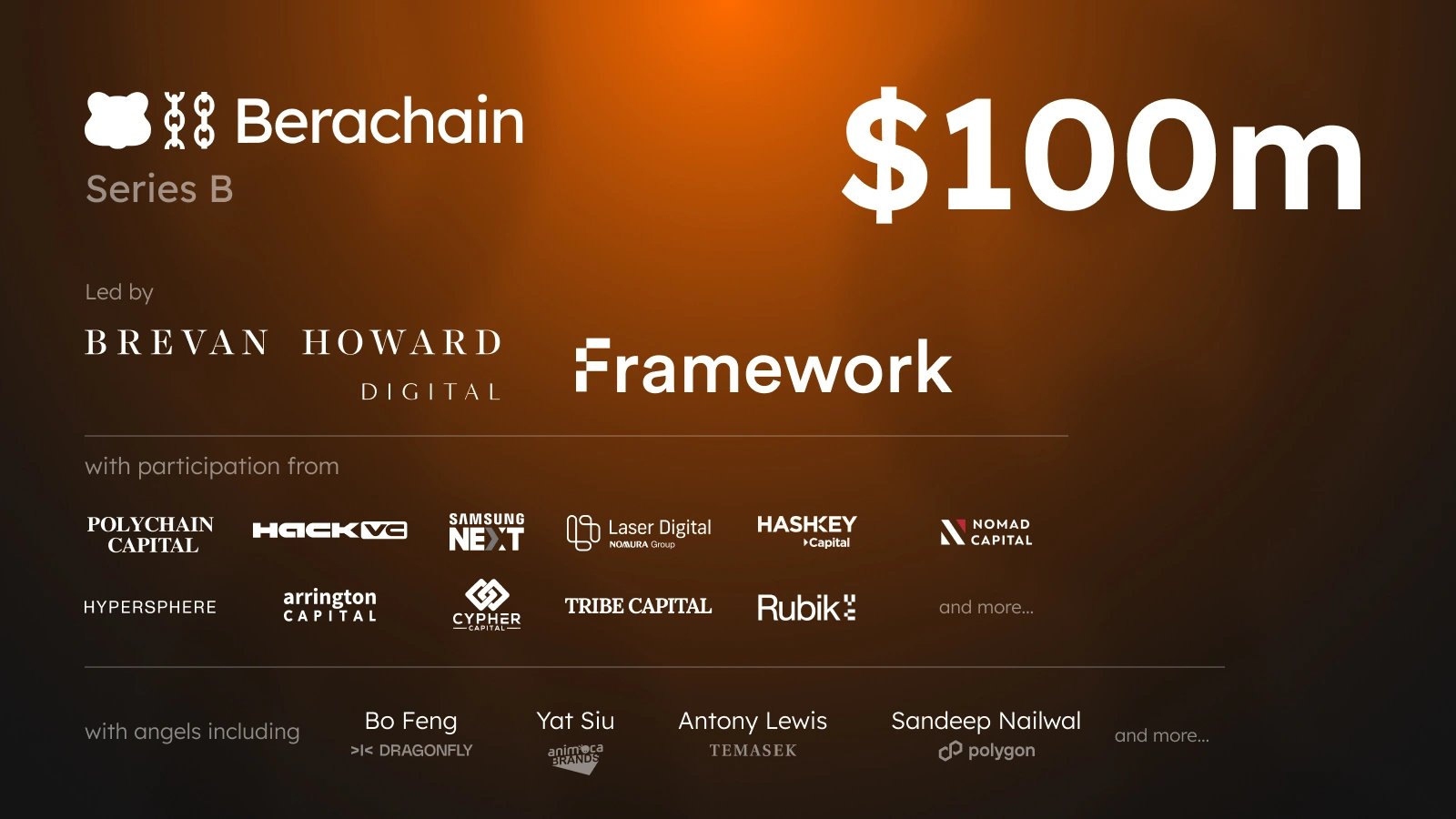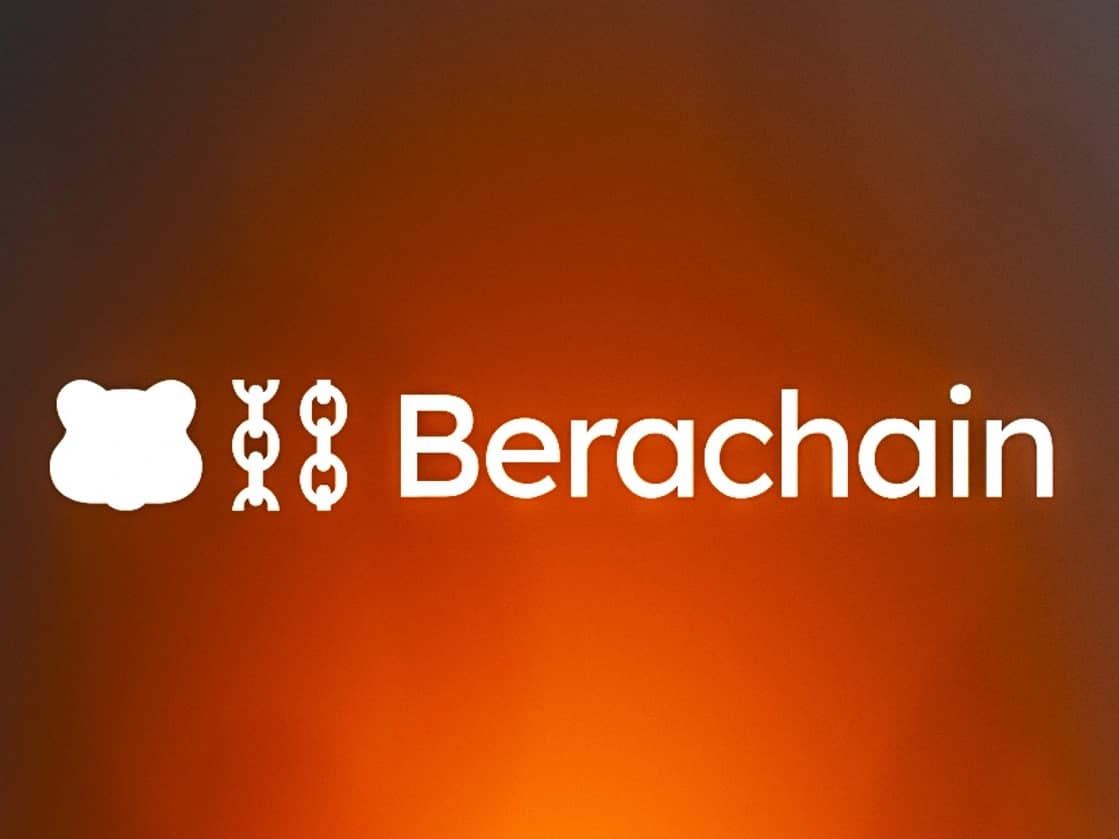Berachain
Berachain protocol is an EVM-compatible layer-1 blockchain built on the Cosmos SDK and powered by Proof-of-Liquidity. [1][2]
In February 2025, Berachain passed a milestone with its total value locked (TVL) surpassing $3.26 billion, making it the sixth-largest blockchain network in decentralized finance (DeFi), according to DeFi data tracker DefiLlama.
Overview
Launched by a quartet of pseudonymous founders (Smokey the Bera, Papa Bear, Homme Bera, and Dev Bear), Berachain is a high-performance EVM-compatible blockchain built on Proof-of-Liquidity consensus. Proof-of-Liquidity is a consensus mechanism that aims to align network incentives, creating a strong synergy between Berachain validators and the ecosystem of projects. Berachain's technology is built on Polaris, a high-performance blockchain framework for building EVM-compatible chains on top of the CometBFT consensus engine. [3]
The Berachain Protocol is built on top of Polaris EVM, which allows smart contracts compiled from Solidity or Vyper to be converted into bytecode. The protocol adopts CometBFT for consensus, and because it's built upon the Cosmos SDK, it can be modular for different clients, data layers, and more. [3]
Funding
On April 12, 2024, Berachain announced a $100M Series B round, co-led by Brevan Howard and Framework Ventures. [13]
They were joined by existing and new investors including Polychain Capital, Hack VC, Tribe Capital, Nomura, Laser Digital, Hashkey Capital, Samsung Next, Hypersphere, Nomad Capital, Arrington Capital, and others. Angels include Bo Feng, Yat Siu, Antony Lewis, Sandeep Naiwal, and others. [13][14]
“We see this raise as a major validation of our approach to building a blockchain that’s built on feedback from real users and developers, and driving value to those groups who are actually contributing to the network’s growth,” Berachain co-founder Smokey the Bera said in a press release
Berachain plans to use the $100 million raised to strengthen its “economic growth initiatives and engineering resources,” as well as expand its global presence into Hong Kong, Singapore, South East Asia, Latin America, and Africa. [19]

In April 2023, Berachain raised $42 million Series A at a valuation of $420.69 million. The fundraise was led by Polychain Capital and included investors Hack VC, dao5, Tribe Capital, Shima Capital, CitizenX, and Robot Ventures, as well as several undisclosed centralized crypto exchanges. [18]
Technology
Proof Of Liquidity
The Berachain economic model Proof-Of-Liquidity (PoL) is a consensus mechanism and approach to blockchain governance that addresses decentralized networks' critical challenges. [4]
Polaris EVM
Polaris EVM is a modular EVM framework, providing the execution environment for smart contracts on Berachain. Its EVM compatibility is facilitated by the Berachain Polaris EVM library. Polaris Ethereum enhances the EVM experience beyond Ethereum's fundamental implementation, offering developers the ability to create stateful precompiles and custom modules for more efficient smart contracts, while maintaining reliable Ethereum functionality. [5]
CometBFT
CometBFT powers Berachain as its Consensus Engine, enabling secure and consistent application replication across multiple machines. It ensures security by tolerating failures in fewer than one-third of the machines and maintains consistency by synchronizing transaction logs and states among non-faulty machines. This replication is crucial for fault tolerance in various applications, from currencies to infrastructure orchestration. [6]
CometBFT implements Byzantine fault tolerance (BFT), allowing it to handle machine failures, including malicious ones. While BFT theory has existed for decades, its recent popularity is attributed to blockchain technologies like Bitcoin and Ethereum, which modernize BFT with peer-to-peer networking and cryptographic authentication. [6]
CometBFT comprises a blockchain consensus engine and an Application BlockChain Interface (ABCI), based on the Tendermint consensus algorithm, ensuring consistent transaction recording and delivery to applications for processing. Unlike other solutions, CometBFT allows developers to implement BFT state machine replication for applications written in any programming language or development environment. [6]
Precompiles
Precompiles or Precompiled contracts are a unique category of smart contracts with functionality incorporated directly into the EVM instead of executing as bytecode, each assigned a specific address. The gas fees for executing these contracts are predetermined. [7]
In Berachain, this is primarily used to enable deeper functionality on the chain that interacts directly with various Cosmos modules that otherwise would be inaccessible outside the EVM. [7]
Berachain Governance
Proposals
Proposals are usually proposed functionality that applies to validators, whitelisted pools, whitelisted tokens, etc. This functionality borrows from the Cosmos SDK governance module and allows proposals and voting to be done onchain. Proposals can also be viewed and created through BGT Station. [8]
The 4 different types of proposals that are available include:
- Text Proposals - Proposals that don't have automatic functionality implemented when are passed
- Gauge Proposals - Where new liquidity providers are whitelisted to allow validators to choose them for accepting BGT emissions3. Collateral Proposal - Where new tokens are whitelisted and mapped to Honey are available to trade through the BEX3. Market Proposal - Tokens that are wrapped can be proposed for trade in the BEX[8]
Voting
Validators and delegators can vote on proposals that can change preset parameters of the system automatically (such as the block gas limit), coordinate upgrades, and vote on amendments to the human-readable constitution that governs the policies of Berachain. The constitution allows for cohesion among the stakeholders on issues such as theft and bugs, allowing for quicker and cleaner resolution. [8]
Tokens
BERA Token
BERA is the network token used to send transactions on the blockchain, which is why it's sometimes called the "gas token." It is used to pay for the transaction's gas. [9]
BGT Token
Proof of Stake blockchains have a governance token used to secure the network through staking with validators. The economic value of all the tokens staked in the network adds up to form the security of the chain. Oftentimes, this is the main network token. [10]
However, because of Berachain's Proof of Liquidity model, this token is BGT (Bera Governance Token).BGT is non-transferable and can only be acquired by depositing liquidity in the native BEX. [10]
Utility
BGT, when delegated to a validator, can be used to create and vote on governance proposals such as proposals that decide which LP pools receive BGT emissions. Once delegated, users will start earning various rewards from the network. [10]
Honey Stablecoin
Many protocols depend on more stability in the price of their tokens than standard cryptocurrencies provide. This led to the concept of stablecoins, coins pegged to the real dollar value of fiat currency. [11]
In Berachain, HONEY serves as a stablecoin that aims to approximate 1 USDC and can also be burned 1:1 for BERA. [11]
